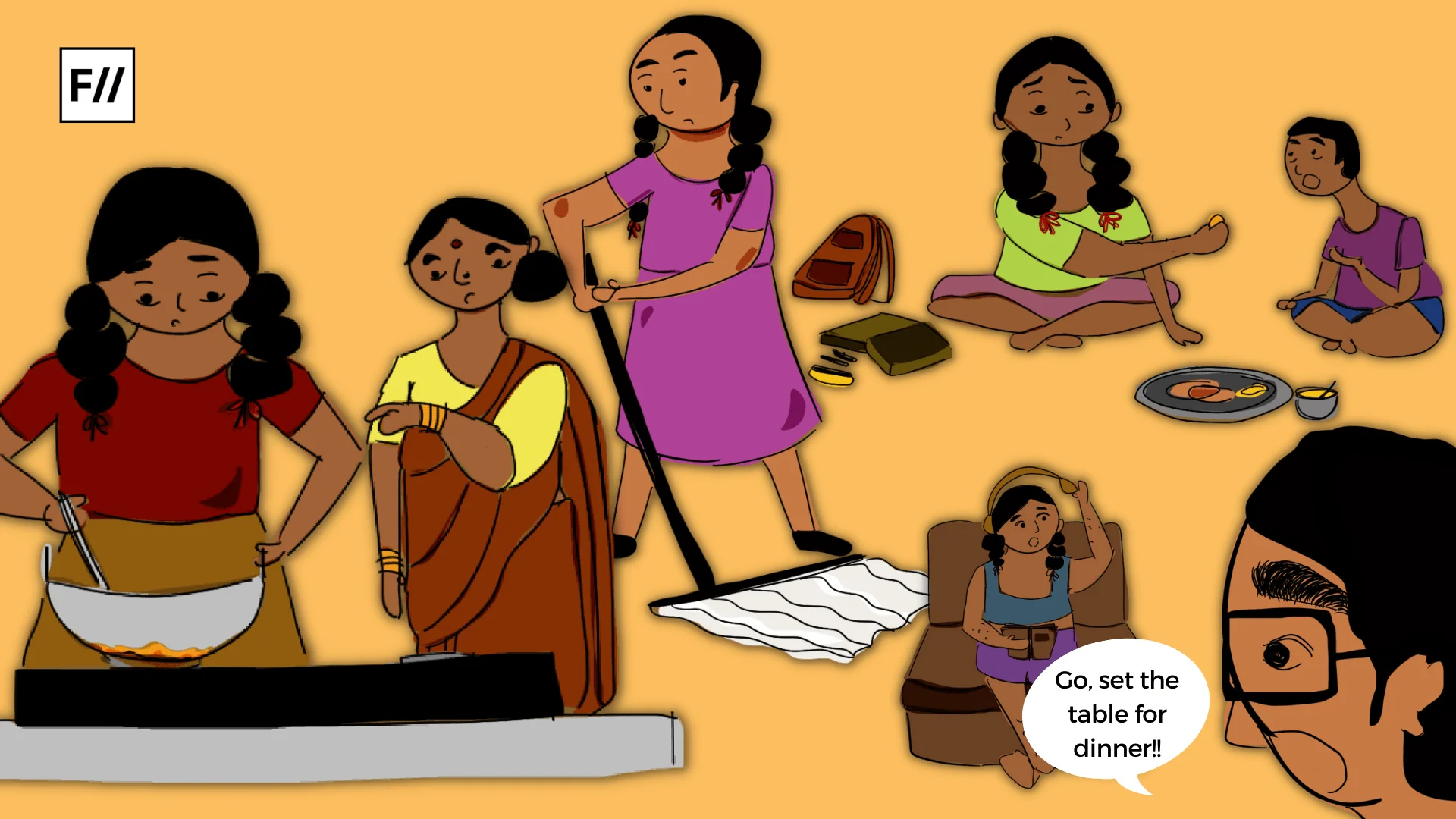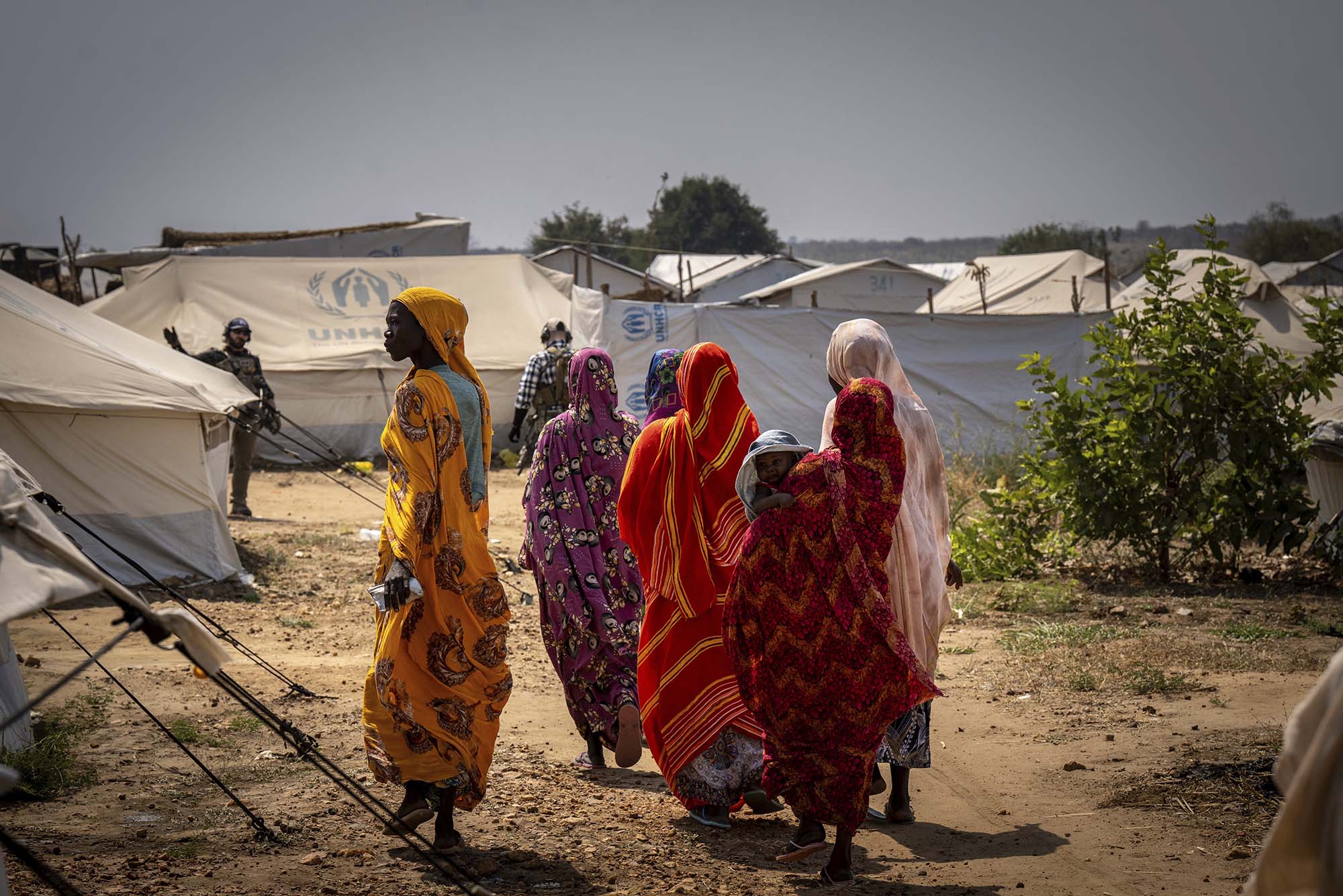The Foreign Contribution (Regulation) Act (FCRA) has always been a point of discussion and intrigue ever since its origin. In September 2020, FCRA broadly redefined the terms related to acceptance, transfer, and utilisation of foreign funds under the 2010 Act. Within less than 10 days, with no pre-legislative public or stakeholder consultations, the bill was passed and came into effect from 29th September 2020.
Ever since the implementation of the Act, there has been constant resistance from the non-profit ecosystem as the new amendments massively impact the groundwork of non-governmental organisations. Recently, a petition was filed before the Supreme Court in the matter of Noel Harper & Others v. Union of India, challenging the validity of certain provisions of the FCRA 2020 Act. While hearing this petition, the Supreme Court observed orally and told the Centre – “You are discouraging NGO activities”
Before we delve into how FCRA 2020 amendments impact the future of philanthropy and feminist organisations, let’s first look at what FCRA is and what the nature of these amendments are.

What is FCRA?
In a nutshell, FCRA regulates foreign funding to domestic non-profit organisations, among other entities. So the legislation essentially puts a scheme of registration for entities wanting to receive funds from foreign countries. There are also a large number of disclosures that need to be made under the Act like – how much you have received, from whom, how would you use it, and much more. The legislation was introduced in 1976 during an emergency and ever since, it has seen several amendments.
The thought process behind this legislation is that there cannot be an unregulated flow of foreign funds into these entities because the government wants visibility on why these offshore funds are coming in and what are they used for because the perception is that they can be used for anti-national activities or activities that are not in the national interest. However, the very history of FCRA suggests that this law was instituted to constrain and silence political dissent in the country.
A short history of FCRA
The FCRA came into being in 1976 during the regime of late Prime Minister Indira Gandhi and the Act originally prohibited political parties, electoral candidates, members of parliament, judges, and even cartoonists from accepting foreign contributions. Journalist G. Sampath, in a 2016 article pointed out that, “The inclusion of ‘cartoonists’ under its ambit suggests the intent was to clamp down on political dissent.”
Later, a slew of amendments were introduced by the then Congress-led government in 2010. The 1976 Act allowed organisations of political nature to receive foreign contributions with the prior permission of the central government whereas the 2010 Act shifts its focus and prohibits the ‘organisations of a political nature’ to receive foreign contributions.
The FCRA Rules, 2011, enumerate the kind of organisations that could be targeted under the FCRA as “an organisation of a political nature”. The list is revealing: trade unions, students’ unions, workers’ unions, youth forums, women’s wing of a political party, farmers’ organisations, youth organisations based on caste, community, religion, language and “any organisation which habitually engages itself in or employs common methods of political action like ‘bandh’ or ‘hartal’, ‘rasta roko’, ‘rail roko’ or ‘jail bharo’ in support of public causes”.
Expanding the scope of section 3 of the 2010 Act to include “organisations of political nature” read with the objective of the Act- gives draconian powers to the government and restricts civil-society organisations from accessing foreign funds. These excessive discretionary powers can be arbitrarily used by the government to suspend the organisations that might question them or their policies in a democratic battle to protect constitutional rights and entitlements.
Any policy analysis should study the impact of policy on people and explore how this impact could vary given gender differences and inequalities. A gender perspective contributes to a more informed view of policy options and impacts. If we look at the Women and Girls Index, an index that measures charitable giving to women’s and girls’ causes in the U.S. based on Internal Revenue Service (IRS) data published in December 2020, the share of funding for women’s and girls’ organisations remains relatively small: 1.6 per cent of all philanthropic giving

Interestingly, both the Bharatiya Janata Party (BJP) and the Congress were pulled up by the Delhi High Court in 2014 in the matter of Association for Democratic Reforms v. Union of India for violating the FCRA by accepting contributions from the Indian subsidiaries of the London-based multinational, Vedanta. The court ordered the government and the Election Commission to take action against both parties.
However, the BJP-led NDA government did not take any action, instead, in 2016, it amended the FCRA through the Finance Act, 2016 retrospectively and conveniently legalised the foreign funding for political parties. The amendment allowed a company that is compliant with foreign direct sectoral caps to freely contribute to any person without adhering to any restrictions since they were excluded from the definition of foreign source as defined in the 2010 Act.
Even the current changes in FCRA come in the backdrop of the cancellation of FCRA registrations of 4 (four) Christian NGOs. The government has observed that, the annual inflow of foreign contribution has increased over the last 10 years, and that many recipients of foreign contribution, have diverted funds for purposes, other than those, mandated by their respective FCRA registrations/permissions, and hence the amendment.
Unpacking the FCRA 2020 amendments
If we could categorise the 2020 amendments into two buckets – they are structural and procedural. These structural amendments strike at the very heart of how NGOs operate.
1. A blanket ban on sub-grants
Earlier, the NGOs could sub-grant their funds to other NGOs who are either registered with the FCRA or have received permission to receive the sub-grant. The amended Act amends Section 7 of FCRA prohibiting persons authorised under FCRA from transferring such foreign contributions to any person. This severely impacts collaborative work for NGOs.
Poonam Muttreja, executive director of the Population Foundation of India, which works on the implementation of gender-sensitive population, health, and development strategies, and policies, told The Wire that FCRA 2020 will mark the “end of any partnership. If you are getting foreign funding, you cannot work in partnership with anyone, you will now not be able to give the money to an individual or another NGO or collaboration partner. All large NGOs collaborate with smaller NGOs which are there at the grassroots level – they do not have the capability of raising money or writing reports but do the real work. We support them to do the real work and we raise funds and write reports and support them as an intermediary organization. So this would mean the end of the small NGOs”.
If we debunk this amendment in the light of the objective of bringing transparency and accountability, then it serves no purpose. Even in the 2010 Act, FCRA money could be re-granted only to organisations with FCRA approvals. When they have already been vetted by the FCRA division, what was the need for a blanket ban?
In effect, it only makes it difficult for NGOs to operate, furthermore for on-ground smaller NGOs. This amendment will render 5,000-7,000 workers unemployed in Jharkhand alone – most of them are Dalits, Adivasis or women, as pointed out by AK Singh, managing director of the LEADS Trust.
2. Reduction of administrative expenses
As per the 2020 amendment, there is a reduction in the amount of foreign funds that can be used for administration purposes. Earlier the limit was 50 per cent which has now been arbitrarily reduced to 20 per cent. Administration expenses include expenses like payment of salaries, travel expenses, consumables like water/electricity, telephone charges, postal charges, rent and repairs to premise(s), costs associated with running an office, etc.
Though this reduction does not apply to organisations primarily engaged in research or training, what happens to other NGOs who are not covered under this exception but owing to their nature of activity have high administrative expenses?
Definitely, for accountability, the government needs to monitor, whether the NGOs are utilising the funds towards the objective of the grant. This can be effectively assessed through disclosures and audits. There is no logic or explanation by the government how capping the funds used for administration purposes will check ‘mis-utilisation’.

3. Expansion of the list of prohibited individuals to include public servants
Earlier the list included judges, politicians, government servants and now the list of prohibited individuals has been expanded to include public servants as well. The term government servant is limited to any person employed or appointed under government. However, a public servant is a wider term and includes all 12 categories specified under section 21 of IPC.
Broadly, it includes the office-bearers of the registered co-operative societies receiving any financial aid from the government, from a Government Corporation/Company, the employees of universities, Public Service Commissions, and Banks, etc.
The amendment is believed to have been introduced in light of the cancellation of the FCRA registration of Lawyers Collective, an NGO run by lawyers Indira Jaisingh and Anand Grover. During the court proceedings, it was argued on behalf of the Government that Indira Jaisingh who was an Additional Solicitor General of the Government at the time was prohibited from receiving any foreign contribution by virtue of being a government servant covered under Section 3 of FCRA.
This was opposed on behalf of Lawyers Collective and it was contended that Indira Jaisingh was, in fact, a “public servant” as defined in Section 21 of the Indian Penal Code, 1860 and not a government servant covered under Section 3 of FCRA. The Government has thus attempted to plug this gap by adding the term “public servant” to the list of persons prohibited from receiving foreign contributions.
Essentially, this has an overreaching impact for NGOs as they will have to relook at their board/members to ensure that if they are receiving foreign contributions then they do not have public servants as their members.
We also know that while recent government commitments might be big, they are pale in comparison with spending that compounds inequality for women, girls, and the queer community. There is a clear funding gap and the new FCRA changes will make it further crippling for feminist organisations to operate. Considering how these amendments were introduced during the pandemic and the funding & the equity gap the FCRA can amplify underlying inequities and make it increasingly onerous for feminist organisations to pull through as they are already struggling for funding
With respect to procedural amendments, they are four main changes.
4. Mandatory Opening of a bank account in SBI, New Delhi
As per the 2020 Act, foreign funds can only be received by an organisation in the State Bank of India, Delhi Branch account. However, it provides flexibility to the recipient, to also open another FCRA account in any of the scheduled banks in India, to keep or utilise the foreign contribution, which has been received from its “FCRA account” in the branch of State Bank of India at New Delhi.
The objective behind this amendment is to centralise the inflow of foreign contribution into one bank making it easier for the Government to monitor and track the funds received under FCRA. However, we cannot overlook the tragic level of centralisation being proposed and logistical difficulties for NGOs based in remote areas.
For an NGO based in Dindigul, Tamilnadu, to receive foreign contribution they will first have to open an account with SBI, Delhi branch. In times of digital banking, there can be better ways of monitoring and tracking the flow of funds instead of posing such irrational logistical hurdles.
Also read: Women And Finance: The Pandemic Has Seen A Promising Rise In Female Investors
5. Power to prohibit a foreign contribution recipient from utilising/receiving its funds
This amendment empowers the Government to prohibit a person who had received permission under FCRA if the government prima facie believes that there has been a contravention of FCRA by the said person. Though this amendment is preventive in nature, however, it can be used by the government to harass NGOs who seem unfavourable to the government. In the past, in cases like T. Mano Thangaraj v. The Deputy Secretary To Government Of India, the government has suspended the license of an NGO in contravention of principles of natural justice.
6. Increase in the maximum limit for the period of suspension
The Bill amends Section 13 of the FCRA to give the government the power to suspend the registration certificate (which means that foreign contribution cannot be received/utilised) for up to 360 days (which currently is 180 days) pending an inquiry for cancellation of FCRA registration. It is not clear how this additional period of 180 days will help the government in bringing transparency and accountability. It acts as a tool to keep the FCRA registration certificate under suspension/ in abeyance for almost a year when the government may not have enough grounds to cancel the registration.
7. The renewal of certificate now includes scrutiny
Given that the FCRA registration expires after five years, FCRA holders will be subject to an inquiry at the end of every five years if they wish to renew their registration, rather than a simpler renewal process before the amendments. Scrutiny before renewals will only lead to delays and crippling the work of civil-society organisations.
An uphill path for feminist organisations
Any policy analysis should study the impact of policy on people and explore how this impact could vary given gender differences and inequalities. A gender perspective contributes to a more informed view of policy options and impacts. If we look at the Women and Girls Index, an index that measures charitable giving to women’s and girls’ causes in the U.S. based on Internal Revenue Service (IRS) data published in December 2020, the share of funding for women’s and girls’ organisations remains relatively small: 1.6 per cent of all philanthropic giving.
Feminist organisations and movements are one of the key drivers of sustained social change, especially to advance gender equality. But women’s rights, gender justice, and feminist organisations have been persistently under-resourced. As per the Indian Philanthropy Report, 2020 – India scores low on gender equality, yet this sector receives just 1 per cent of domestic philanthropic and CSR funds. Quality education, on the other hand, gets one-third of those funds, despite India’s strong score on the Sustainable Development Goals (SDG).
The mismatch is also evident through a geographic lens. For instance, while Maharashtra receives 34 per cent—the largest proportion of philanthropic and CSR funding—states like Jharkhand, with far worse development indicators, receive a much smaller proportion of funding at less than 1 per cent. As per another report by Bain & Company and Dasra on Family Philanthropy, it was found that projects which focused on gender equality received less domestic philanthropy funding as compared to health and education. The reports said that the personal experiences of wealthy donors are a key factor in this bias.

Even if we look at the gender budget released by the government, it has remained below 5 per cent of the total expenditure budget, and below 1 per cent of gross domestic product. Gender budget 2021-’22 has shrunk by 26 per cent, from Rupees 2,07,261 crore in 2020-’21 (revised estimate) to Rupees 1,53,326 crore in 2021-’22.
We also know that while recent government commitments might be big, they are pale in comparison with spending that compounds inequality for women, girls, and the queer community. There is a clear funding gap and the new FCRA changes will make it further crippling for feminist organisations to operate. Considering how these amendments were introduced during the pandemic and the funding & the equity gap the FCRA can amplify underlying inequities and make it increasingly onerous for feminist organisations to pull through as they are already struggling for funding.
Reimagining FCRA for civil society
NGOs funding need to be regulated. One cannot deny that there are no black sheep, which essentially are there in every sector. Having a black sheep does not imply that legislation should give the government such unbridled power that its selective employment could turn it into a political tool in the hands of state authorities.
In the name of tracking and transparency, surveillance should not become the norm. Instead of posing blanket bans and making the operations difficult for civil society organisations, we need to have more audits that enable the government to identify those NGOs which misuse foreign funding. The restrictions in the name of “national interest” are vague and catch-all variety and fail the test of “legitimate restrictions”.
FCRA in its current form has given the state excessive discretionary powers to apply the provision arbitrarily and is shrinking the space for civil society and feminist organisations in the name of regulation.
Also read: Where Are All The Women In Governance And Public Finance?
About the author(s)
Vanita is a lawyer by training and writes stories at the intersection of business & public policy, law, regulations and building inclusive workplaces. She is a Staff Writer for The Ken.




